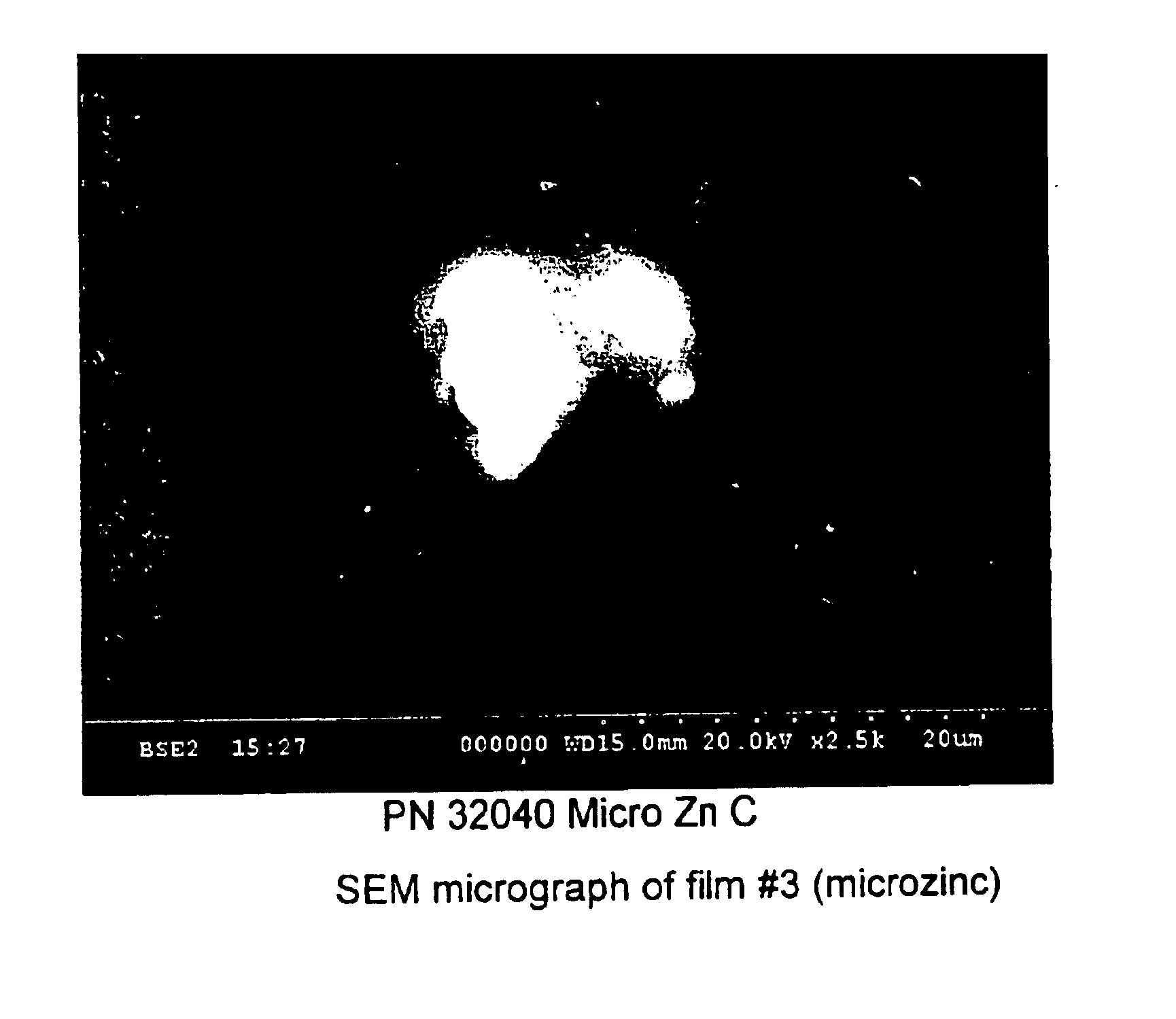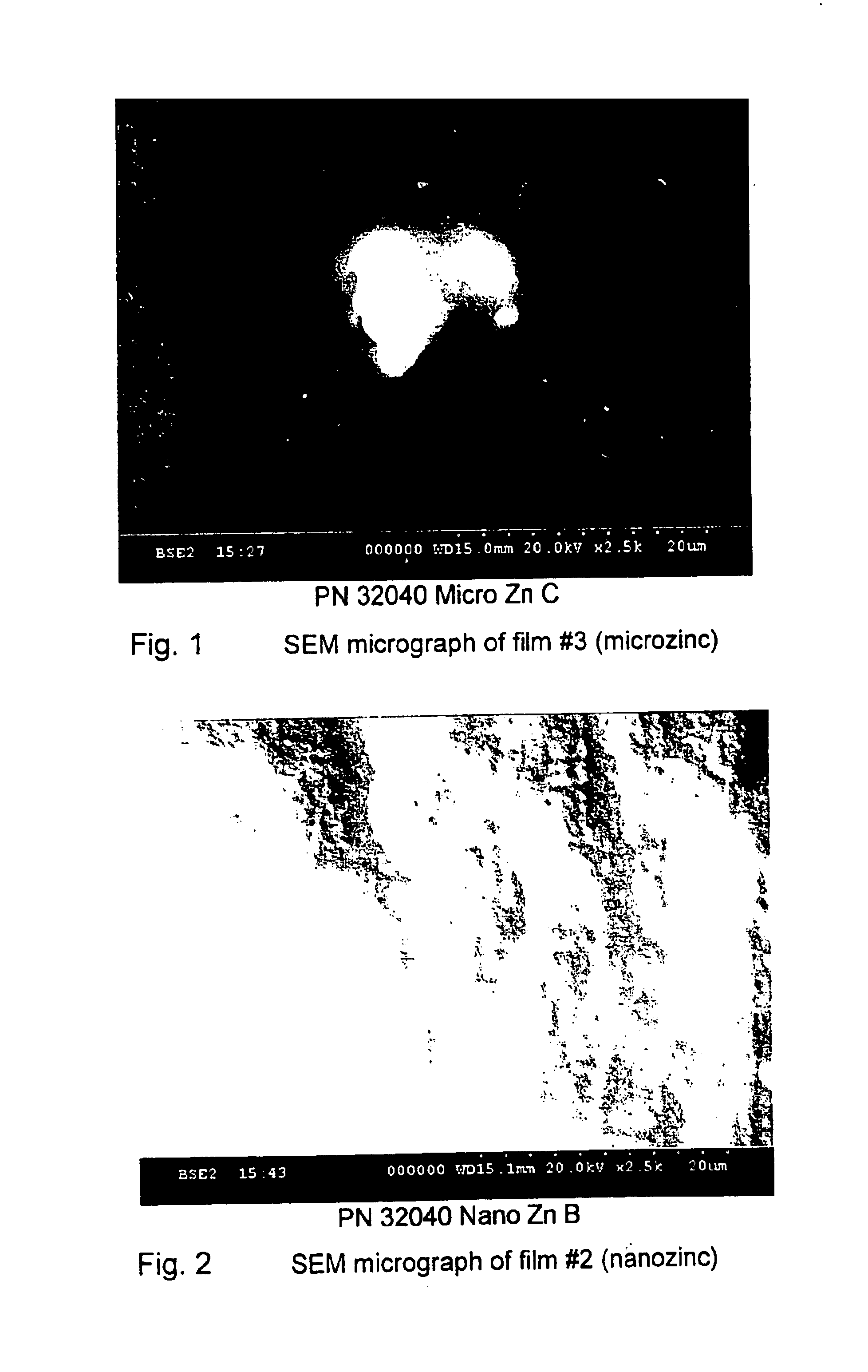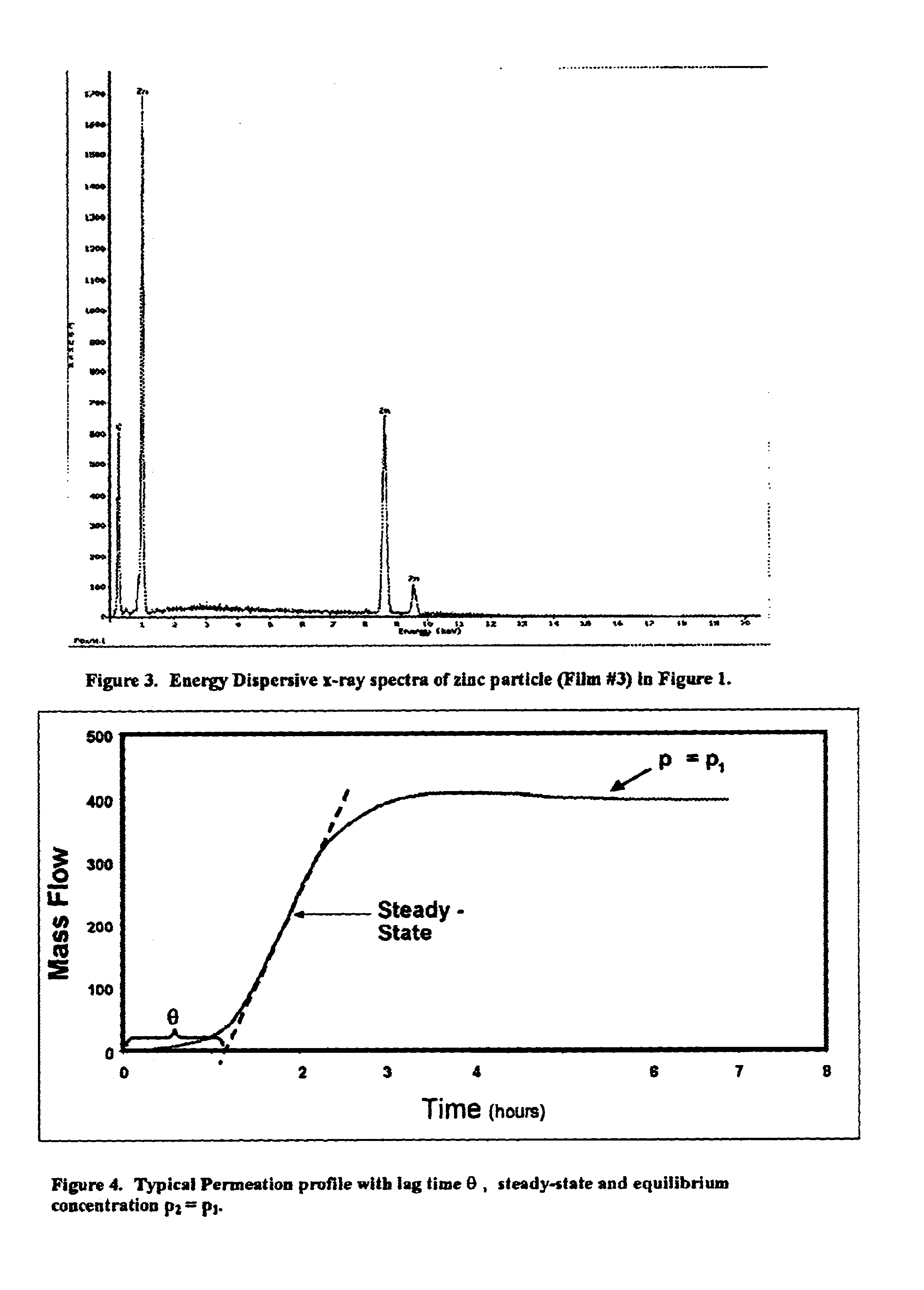Barrier material with nanosize metal particles
a technology of metal particles and barriers, applied in the field of barriers with improved barrier properties, can solve the problems of incontinent products, high undesirable malodors emanating from soiled diapers, material or containers for temporarily storing soiled diapers, etc., and achieve the effect of improving barrier properties
- Summary
- Abstract
- Description
- Claims
- Application Information
AI Technical Summary
Benefits of technology
Problems solved by technology
Method used
Image
Examples
example 1
[0105]Quantitative Estimate of Zinc Film Capacities. Film reactivity and capacity was measured by placing zinc containing film curved into a cylinder and placed in a glass jar which is subsequently sealed and filled with a reactive test vapor. The vapor partitions into both sides of the film. In this test, the vapor concentration is measured in the headspace of the glass jar as a function of time. These data are used to make quantitative estimates of how the reactive barrier will perform. The nano- and micro-zinc films in this experiment are identical in weight (1.664 grams) and the areas of the nanozinc film and microzinc film are approximately 384 cm2. The effect of the chemical reaction between chloroacetic acid vapor and zinc in the film is a drop in the vapor concentration in the jar. The partition coefficient and diffusion coefficient will be identical for both test films since the HDPE polymer is identical. The test at large times (>60 min.) shows the extent of reaction betwe...
example 2
[0108]Lag Time Diffusion. This method involves experimental techniques designed to measure trichloroacetic acid flux across a 20 μm test film at small times. HRGC operated with an ECD is used to measure the change in the cumulative chloroacetic acid concentration over time in the upstream cell at 22° C. At one minute and then every five minutes, a time composite sample is collected by SPME from the downstream cell and analyzed by HRGC / ECD using a two minute SPME sampling interval beginning at four minutes and ending at six minutes (method conditions Table 3). The chloroacetic acid concentration is determined from calibration standards. Table 6 contains the concentration p2 of chloroacetic acid in the upstream cell at t=0, and lag time diffusion is based on the linear portion of steady-state chloroacetic acid permeation extrapolated back to the time axis for Film #1 (control), Film #2 (nanozinc), Film #3 (microzinc) and Film #4 (triacetyl αcyclodextrin).
[0109]
TABLE 6Lag time diffusio...
example 3
[0111]Example 3 shows how the results provided in Examples 1 and 2 can be combined with other characteristics of diffusion to demonstrate how better barrier films can be made with nanozinc. This method involves experimental techniques designed to measure the flux of three co-permeants (hexanal, butyric acid and isovaleric acid) across a 50 μm test film. HRGC operated with an FID is used to measure the change in the cumulative co-permeant concentration over time in the upstream cell. Every thirty minutes, a time composite sample is collected by SPME from the downstream cell and analyzed by HRGC / FID using a fifteen minute SPME sampling interval beginning at 90 minutes and ending at 105 minutes (sampling interval midpoint 97.5 minutes) then every thirty minutes thereafter to 247.5 minutes and the final sampling midpoint interval at 1,447.5 minutes. The hexanal, butyric acid and isovaleric acid concentration is determined from calibration standards and measured in μL / L or parts per Mill...
PUM
| Property | Measurement | Unit |
|---|---|---|
| diameter | aaaaa | aaaaa |
| diameter | aaaaa | aaaaa |
| diameter | aaaaa | aaaaa |
Abstract
Description
Claims
Application Information
 Login to View More
Login to View More - R&D
- Intellectual Property
- Life Sciences
- Materials
- Tech Scout
- Unparalleled Data Quality
- Higher Quality Content
- 60% Fewer Hallucinations
Browse by: Latest US Patents, China's latest patents, Technical Efficacy Thesaurus, Application Domain, Technology Topic, Popular Technical Reports.
© 2025 PatSnap. All rights reserved.Legal|Privacy policy|Modern Slavery Act Transparency Statement|Sitemap|About US| Contact US: help@patsnap.com



